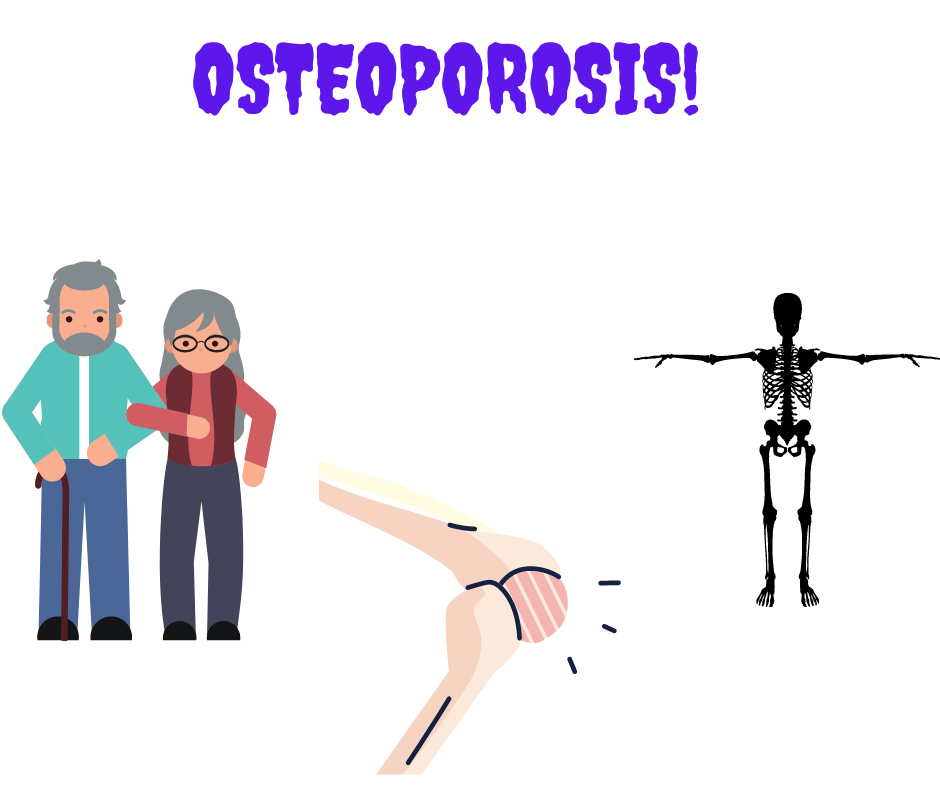Osteoporosis is a systematic bone disease that is characterized by a decrease in bone mass, changed bone structure, and increased risk of fracture.
Postmenopausal women are especially at risk, due to the decrease of estrogen in the blood. Osteoporosis is an asymptomatic disease that often goes unnoticed until the bone fracture happens. Fractures lead to pain, impaired movement or immobilization and hospitalisation, comorbidities and increased mortality rates.
Increased mortality is most prominent in hip fractures in older women. Hip fractures always require hospitalization. Rehabilitation is slow and incomplete, so many people need constant medical care, Fractures are commonly sudden, without any warning signs and symptoms.
Epidemiology osteoporosis
It is the most common metabolical bone disease. Its prevalence is quite high, as approximately 8-10 of the world‘s population is affected by osteoporosis. This number will be even higher due to the increase in the elderly population and the modern way of living. Around 21% of women in menopause and 6% of men older than 50 years develop this condition/
Non – affectable risk factors
Nutrition
Too little calcium in your diet can increase your chances of getting osteoporosis. Recent research shows that vitamins K2 and D3 play a big important role in the process of calcium use in the body.
Physical activity
Prolonged physical Inactivity over a long time increases the chances of developing osteoporosis. Regular physical activity makes and keeps the bones stronger.
Medications
Some medications such as corticosteroids have an adverse effect that causes bone loss. Some drugs that are used to treat epilepsy and depression, also may express this effect and cause osteoporosis. Other drugs may include drugs used for the treatment of endometriosis or uterus cancer.
Smoking
Smoking cigarettes can significantly affect the quantity of calcium in the human body. Besides that, female smokers go through the menopause sooner compared to nonsmoking women, which additionally increases the risk of osteoporosis.
Weight
People whose weight is below average have a greater chance to develop this disorder.
Alcohol
People who consume alcoholic beverages regurarly have a greater chance to develop osteoporosis
Affectable risk factors
Sex
Women have less body mass than men, and they are losing it faster due to hormonal changes due to menopause thus have increased the risk of developing osteoporosis.
Age
Older people have an increased risk of bone problems.
Ethnicity
People of African and Hispanic origin have significantly less risk of developing osteoporosis as opposed to People of Caucasian and Asian origins.
Family history
People whose close family members happen to have osteoporosis fractures, also have a greater risk for those occurrences.
Osteoporosis therapy
It is advised to follow calcium and vitamin D substitution in recommended doses. First-line medications are bisphosphonates. The most commonly used drug from this group is alendronate due to high efficiency and low-cost. However, if alendronate is contraindicated or shows side effects, alternatives are risedronate, ibandronate, and zoledronic acid.
The next drugs that might be used are monoclonal antibody medications such as denosumab; selective estrogen receptor modulators including raloxifene and bazedoxifene.
Anabolic, bone-building medications can help in bone growth. For example, the most common drug of this type is teriparatide, while strontium ranelate is sometimes in therapy.
Other possibilities include hormone replacement therapy.

